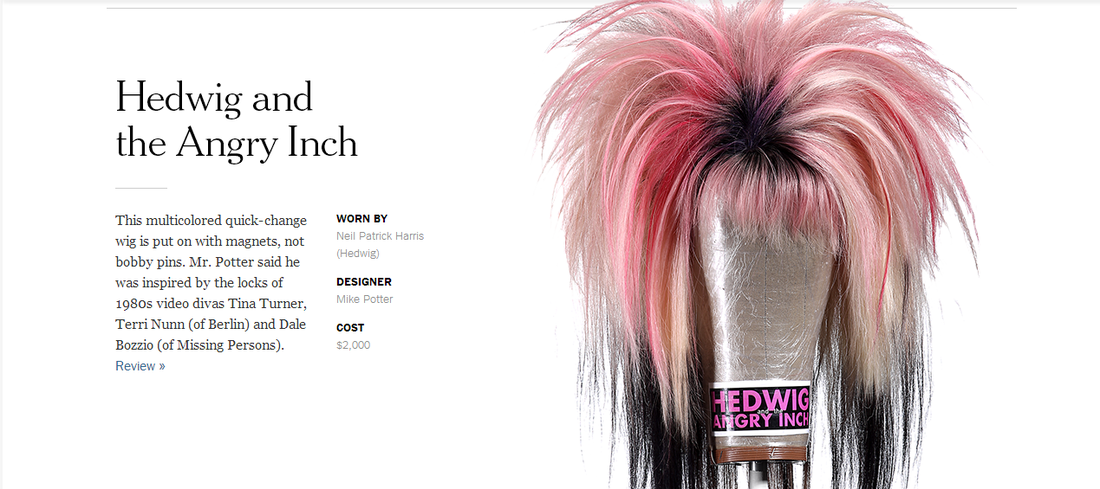|
In many of my previous posts I have mentioned the many meet and greets I have been lucky enough to have with industry professionals. Each time I come armed with a list of questions to ask and advice to seek. One of the best pieces of advice I ever received was from Sam, who at the time was a member of the wig team at LA Opera (I spoke about my chat with her in one of my The Business of Costuming posts). "Create Every Day"At first I thought she was being philosophical and artsy, but after reflecting on Sam's advice, it does pay off in our career choice to create daily. Creating everyday, even if it is just a doodle or mindless craft project, allows our creative juices to flow and not get stale. Doodling or sketching keeps our rendering skills sharp, while crafting allows us to work through challenges we may face in the shop.
0 Comments
With an insurgence of modern musicals with insane quick changes, costumers are having to quick rig costumes to be changed at the speed of sound. How are these impossible changes made easier by those creating the costumes? Here is a list of five quick change costuming tricks I have picked up while working in shops. (Warning: this may ruin some stage magic for non-costumers. Read at your own risk) 1. False LayersSome quick changes need to happen at the speed of light, but the costume design requires layers and layers of clothing. How do we remedy this? The answer is false layering. Creating a "shirt" that contains a man's tuxedo shirt, waistcoat, and bow tie is one of the easier layers to visualize. I have made countless of these getups for shows including my most recent project Young Frankenstein. It can be a little tricky to understand this concept so take a gander at this beautiful example from the 68th Tony Awards. 2. MagnetsEach year inventive costumers find a new use for something. In the recent past costumers have made a sewable magnet tape that can be sewn into costumes to make them easier to change quickly. This technique can be seen in the number "Oh My God" from Legally Blonde: The Musical. In more recent years costumers and wig technicians have created magnetic wigs and other items for these lightning fast changes. Just make sure your actors do not have pacemakers and/or the set is not completely made out of magnetic metals. This could cause disaster! An example of a magnetic wig (again from the 68th Tonys) can be seen in many of the wigs designed for Hedwig and the Angry Inch. (Read the full article from the NY Times here) 3. "Quick Change" dressesThese are more of a stage gimmick than a time saver as the dress has to be rigged each night with invisible thread. That being said, it is beautiful and magical when done well. The concept is pretty straight forward; a dress pieced together in such a way with invisible threat that when broken changes into a different costume. These can be as elaborate as seven changes in a quick change artist performance, or as simple as one change as in Cinderella's ballgown reveal. 4. Under DressingA trick as old as time. Simply wear one costume under the other. This works best if the first costume is bigger and more bulky than the second. For example a suit and tie under a priest's garb or a mini skirt and tank top under a nightgown. It can be done with other items (ie: pants under pants) but takes some tweaking and coordination. 5. Velcro and SnapsThese are very similar to the above mentioned magnets. They replace the buttons or zippers found in shirts and pants to make the dressing and undressing of an actor easier. The only draw back is unlike magnets they take more force to close. Velcro can also make a racket if quick changing in an intimate theatre like a black box.
As costumers we see any and every kind of body shape/size/etc. The numbers we see on our tape measure only tell us how to best fit a costume to a performer. I was taught early in my costuming career that the size of a performer does not matter. They are talented, chosen for their role, and it's my job to make them a costume as beautiful, distressed, flowy, flamboyant, etc. as the director's concept and script describe. The other day I was reading through my Facebook feed when I came across an article posted by Mason Gross School of the Arts (my new home for the next 3.5 years). It was entitled: In 2014, The Classical World Still Can't Stop Fat Shaming Women and was linked to NPR's original posting. Being a fairly modern woman I have heard the fat shaming that happens in Hollywood, but I had never heard of it in the live theatre realm. I read the article.
What greeted me was the picture of a curvaceously beautiful mezzo with a beautiful opera voice. Then came the "reviews" of her performance by critics. Some barely touched on her talent and performance, instead making comments like, "Tara Erraught's Octavian is a chubby bundle of puppy-fat." Other critics were "shocked" at the casting choice. I myself was "shocked" at the shallow phrases being masqueraded as insight into this talented performer's debut. I'm no opera critic, but I believe when describing a performance one normally speaks about THE PERFORMANCE (ie: the melodic tone of voice, how the mistro chose to interpret phrasings, etc.) Theatre, throughout history has always influenced and been influenced by cultural trends. Sadly, the cultural trend that is currently affecting theatre is our western obsession with body size. |
Topics
All
Archives
July 2021
|

